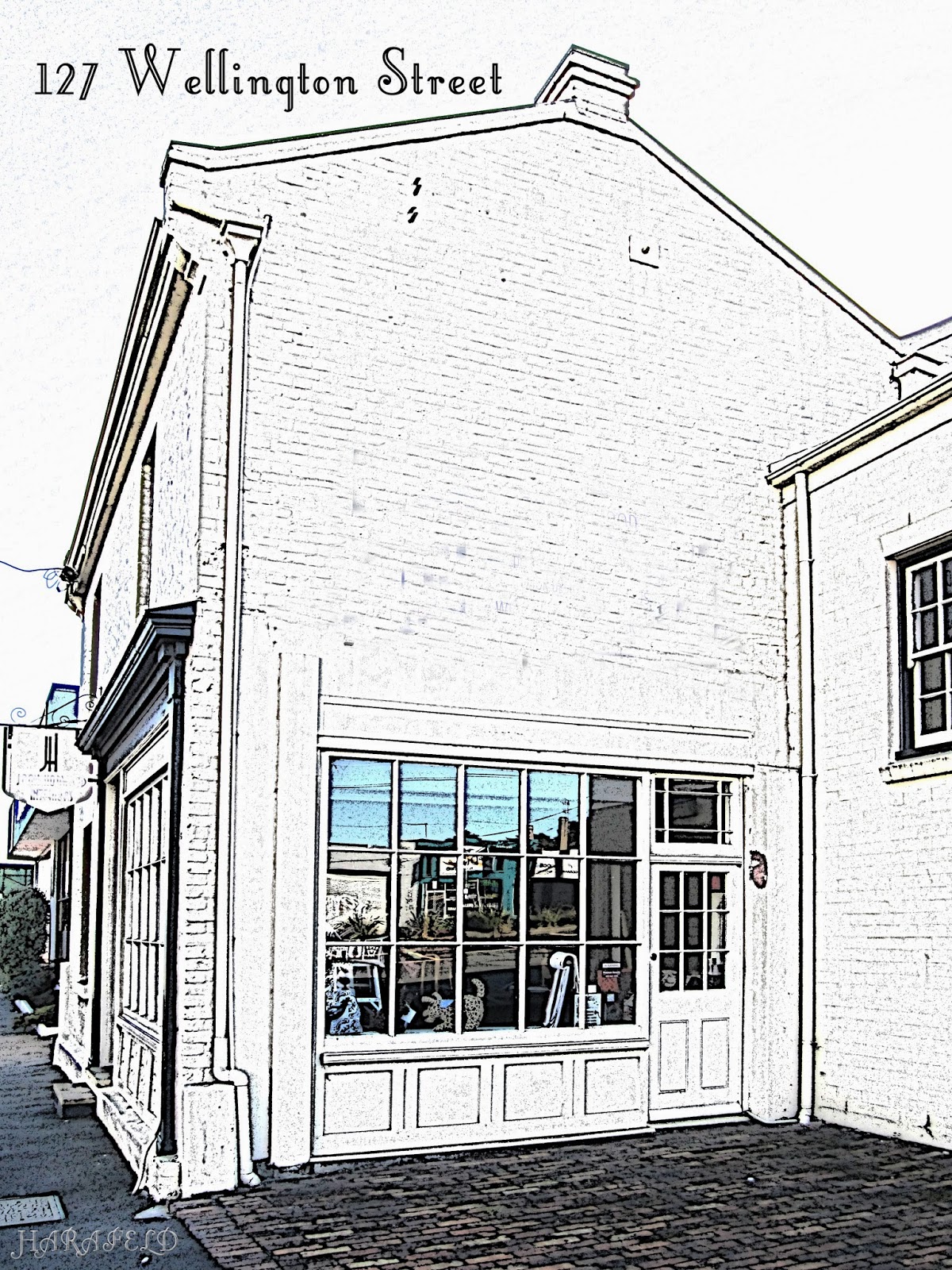This little building, which today
houses an interior design business, has been on the heritage register
of the national estate since 1978. According to the Heritage
Database Site, it was constructed in the 1840s as a house, and had a
shopfront added at a later date, along with various other
modifications.
The first reference I could find in the
newspapers (via TROVE) was 1894, when James Thomas, of this address
was accused of stealing some chooks and a couple of stringy bark
posts from his neighbour. The same year an advertisement was place
seeking “a young lady to teach sewing,”but the nineteenth century
otherwise remains a bit of a mystery. It is not surprising, as street
numbers were not usually given until around 1892.
The property has a number of mentions
in twentieth century newspapers, the saddest being a report about
little Francis McCullagh who died in 1927 when the woodpile he was
playing on, collapsed.
I don't know when the shop was added to
the main building, but it existed in 1928 when the premises what
known as “ The Leading Butchery.” In 1903, someone from this
address advertised for the return of a lost sheep and lamb, so
probably it was a butchery then too.
 In 1930, two youths responsible for a series of robberies in Launceston, were recaptured at this location, the home of Elizabeth Jordan, after they had escaped from the lock-up. The youth's crime spree is recounted in The Mercury of 25 October The two young men claimed that they were encouraged in their endeavours by Elizabeth.
In 1930, two youths responsible for a series of robberies in Launceston, were recaptured at this location, the home of Elizabeth Jordan, after they had escaped from the lock-up. The youth's crime spree is recounted in The Mercury of 25 October The two young men claimed that they were encouraged in their endeavours by Elizabeth.
In 1976, the building became the
Commercial Traveller's Club. The club closed in 1988.(For more
information about the Commercial Traveller's Association see
http://www.qvmag.tas.gov.au/upfiles/qvmag/imglib/collections/CHS56%20Commercial%20Travellers'%20Association%20of%20Tasmania%20(CTA).pdf
).
127 Welllington Street has since been
occupied by an electrical repair shop, and as mentioned at the
beginning, an interior designer.
 There are clearly many missing details
in this account. A peek in Post Office Directories, phone books and
so on would no doubt fill in many of the gaps. I haven't done this
as....well.... to be honest, I'm not really that interested (I will
no doubt soon find out that I've missed some truly earth-shattering
historic event which occurred on the premises because I didn't bother
to find out more!). Hopefully the information I have included gives
some insight into how a single building can have many uses over time
and illustrates that each of Launceston's “less grand” older city
buildings can provide an insight into the story of small business
that is often overlooked, but which is a vital part of the commercial
history of Launceston.
There are clearly many missing details
in this account. A peek in Post Office Directories, phone books and
so on would no doubt fill in many of the gaps. I haven't done this
as....well.... to be honest, I'm not really that interested (I will
no doubt soon find out that I've missed some truly earth-shattering
historic event which occurred on the premises because I didn't bother
to find out more!). Hopefully the information I have included gives
some insight into how a single building can have many uses over time
and illustrates that each of Launceston's “less grand” older city
buildings can provide an insight into the story of small business
that is often overlooked, but which is a vital part of the commercial
history of Launceston.


